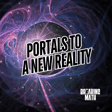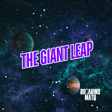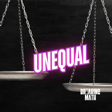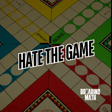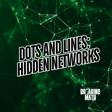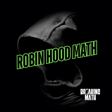Introduction to Map Projections
00:00:00
Speaker
The world is a big place with a lot of wonderful things in it. The world also happens to be spherical, which can make getting to those things a challenge if you don't have many landmarks. This is the case when people are navigating by sea. For this reason, map projections, which take a sphere and attempt to flatten it onto a sheet, were born. So what is a map projection? Why are there so many? And why is Gull Peters the worst? All this and more on this episode of Breaking Math. Episode 64, what projection is this?
00:00:34
Speaker
I'm Sophia. And I'm Meryl. And you're listening to
Challenges of Flattening Earth
00:00:37
Speaker
Breaking Math. So we're going to be talking about map projections today. But before we get started, we have a couple of plugs. Tensors are the mathematical objects used in Einstein's general theory of relativity. And now they're in poster form. We have a lovely 24 inch by 36 inch poster that we made about tensors. And it's available on Facebook.com slash Breaking Math podcast. Just click on shop.
00:00:55
Speaker
The posters are matte, full color, and make a perfect addition to any office. So for $15.15 plus $4.50 shipping and handling, a total of $19.65, you can get this poster for you or someone
Community Engagement and Updates
00:01:09
Speaker
you know. So check it out at facebook.com slash breaking math podcast when you click on store and see if it's right for you.
00:01:14
Speaker
We're also on Patreon at patreon.com slash breakingmath. You can go there if you want to support the show. Even a $1 donation makes a huge difference and will send you a thank you message. With $1 or more you can gain access to episodes slightly early and without ads. We also include the outlines we use to produce the show. We really appreciate your patronage at patreon.com slash breakingmath. We've had a lot of $1 and $5 donations recently and it has been a game changer.
00:01:39
Speaker
We're on Twitter, at Breaking Math Pod, on Facebook, at Facebook.com slash Breaking Math Podcast, and we have an interactive website, at breakingmathpodcast.app, which has not been updated in like forever, but check it out.
00:01:51
Speaker
Yeah, I'm actually still not on the website. That should probably change. Oh yeah, that definitely should. It got changed to a new hosting platform that I have not even delved into. But hopefully by the time the next episode goes out, we'll have that updated at least a little bit. Because we have more than three episodes now, right?
Excitement for Map Projections
00:02:09
Speaker
I am not selling the website. There's some cool applets on there.
00:02:12
Speaker
So I remember we were talking about episode ideas and I remember this one kind of jumped out at us. Meryl, do you want to explain why map projections maybe are kind of fun?
00:02:22
Speaker
So the thing about map projections is at the end of the day, their apology is you're taking things from one surface and mapping them onto a two dimensional coordinate plane.
Topology and Earth's Geometry
00:02:33
Speaker
And if you ever take a class on manifolds, then that's that's entirely topology is developing coordinate charts for whatever surface you're working with.
00:02:42
Speaker
The only difference here, though, is that instead of determining the difference here is that usually instead of determining different coordinate charts for different regions of the Earth, in this case, we're taking the entire Earth and trying to put it onto a flat plane. And that's topology. Yeah. And I believe we talked about topology in episode 58, bringing curvy back, right? Yeah. And probably even more beyond that, because I like talking about topology. It's the coolest thing ever.
00:03:10
Speaker
Oh yeah, it really is. I mean, we also talked about, didn't we do an episode on spheres or circles? Let me check. Yes, we did. Yeah, episode 52 around on circles and spheres, which is a kind of a good companion to this episode for reasons we'll see. Wait, so without further ado, map projections.
00:03:31
Speaker
So we have to ask the question, what is a map projection? And we have to recognize, first and foremost, that Earth is a sphere with- Wait a minute. I thought the Earth was flat. But then if the Earth is flat, then what map projection actually is the Earth if it's already a 2D plane? Well, if the Earth was a 2D plane, that would be called planar denialist projection. And it's a one-to-one angle preserving, area preserving, and shape preserving map. And by objective and by continuous.
00:04:02
Speaker
And by Occam's razor, since it's the most pleasing map projection, it must be the shape of the earth.
00:04:08
Speaker
But no, seriously, the Earth is a sphere. Okay, so we have to talk about obviously what a sphere is, right? So a sphere at its most basic geometric definition is a set of points equidistant from some central point, right? Right, and the sphere that we're talking about, at least in terms of the Earth, is the two sphere embedded in 3D space. And what that means is that we're talking about the set of all points in 3D space that are equidistant to a center, and we call it the two sphere because we can use as little as two coordinates to represent it.
00:04:38
Speaker
And the one that we use for the Earth are latitude and longitude, right?
00:04:42
Speaker
Right, and in math terms, we usually use phi for latitude, which is the up and down, and theta for longitude, which is the right and left. Latitude is zero at the equator, negative 90 at the south pole, and 90 at the north pole, right? Yes, and longitude, on the other hand, can go from anywhere between zero degrees and 360 degrees, at which point you've looped all the way around the Earth. Yeah, and where is longitude zero? If I'm not mistaken, that's the prime meridian.
00:05:11
Speaker
Yeah, also known as the IERS Reference Meridian, which is maintained by an awesome sounding organization. What's it called? The International Earth Rotation and Reference System Service.
00:05:22
Speaker
Yep, which is, it's always fun, you know, these people who maintain charts for like magnetic charts, you know, declination charts and things like that. If you happen to be working for any one of these organizations, you can send us your stories. We always want to hear about that kind of thing. Basically, it just goes through Greenwich, which is also UTC times zero.
00:05:42
Speaker
But yeah, so Meryl, why is latitude seemingly more concrete than longitude? Like latitude, no matter where you are, seems to correspond to something, you know, more real to us versus longitude. But it's an illusion, correct?
00:05:56
Speaker
Right. And I imagine that's simply just the nature of the earth being a sphere with magnetic poles itself is like, because we have, like we've mentioned, 90 degrees, the North Pole, negative 90, the South Pole, and then we've got zero degrees. The equator is just right in between them. It's pretty easy to define. Yeah. And obviously the earth is spinning. So those two things are where, you know, our view of this comes from.
00:06:22
Speaker
Wait, the earth is both not flat and it's spinning now? Yeah, and it's an angels keep you on it though. It's kind of nice. I thought it was turtles. No, the turtles hold up the earth. Angels keep you on the earth. Got it. Got it. You should have learned this in eighth grade science. Must have been sick that day.
Projection Difficulties and Distortions
00:06:42
Speaker
So a flat plane projection attempts to take this data and put it onto a flat piece of paper, right? Like we said during the intro.
00:06:50
Speaker
Right, but as we're gonna find out, that's not quite so easy to do. You can try it yourself by trying to take a piece of paper and cover a globe with it. You're not gonna have that easy of a time. Oh yeah, it'll crumple a bunch and vice versa if you take an orange peel and you try to flatten it onto a sheet of paper, you're gonna have like basically infinite amount of cracks, right?
00:07:11
Speaker
Right, there's actually mathematical terminology that we can use to describe this phenomenon. And so what we're talking about is that there isn't a bijective bicontinuous map between a sphere and say a flat plane like a rectangle. And this bijective bicontinuous map is also called a homeomorphism, a term that you're going to see in topology and discussion of manifolds a lot.
00:07:34
Speaker
Yeah, and a bijective by continue, first of all, bijective, bijective just means that the map can go up, can go backwards and forwards, right? Like a shadow is not a bijective map of an object, right?
00:07:46
Speaker
Yeah, so if we want to really get into the details, then a bijection is both an injective and surjective map, or one to one and onto. What it means is that everything that you input to this map has a distinct output. So no two inputs have the same output. And surjective means that every output has an input. So you go both ways. You're going to have distinct points mapped to other distinct points. It's one to one and onto, we like to call it.
00:08:15
Speaker
Yeah, so example for the in the field of our vision, right? Um, it is on to because every light that appears, you know bright enough to see will appear in our visual field, right? But we're just talking about one eye here, which we are Something like a quarter up like, you know one foot away versus like a big giant like trashcan lid size quarter further away would appear identical, right? Exactly. And what is bicontinuity?
00:08:40
Speaker
So by continuity is what it says on the tin is that this map is continuous both ways. And by the way, when we say map here, we mean a mapping mathematically, not is in a map of the earth, correct? Right. And all that means that we're talking about taking a point in and getting a point out, not drawing something on a piece of paper like we'd see with a map.
00:09:04
Speaker
Yeah, and I mean, it's called that because of maps, obviously, right? Because a map is an abstract, it's a piece of paper is not, you know, the city that rep that it represents, correct? Yeah, so the similarities are there. This is why originally, these are called mappings. But by now, the term map in mathematics is so far removed from actual maps. And we can also describe why it's hard to flatten out using the theorem of greed GM, right?
00:09:28
Speaker
Yes. And we actually talked about this on our episode on curvature is that, so let's say that we just have a piece of paper that we're trying to wrap around a globe, right? So Sophia, what's the curvature of this piece of paper? The local curvature of the piece of paper is zero. Right. And so what about the curvature of the earth then? It's one over the radius, right?
00:09:52
Speaker
Yeah. And so that's going to be a positive value. But needless to say, it's different from the curvature of the piece of paper. And so the piece of paper, no matter how you bend it, it's going to maintain that zero curvature. And as a result, you're not going to successfully wrap your piece of paper around the earth.
00:10:11
Speaker
Yeah, and you can see this really easily with a piece of pizza, right? You take a piece of pizza and you hold it by just the crust, and if it's one of those big, delicious slices of pizza, it'll curve downward, right?
00:10:22
Speaker
Yeah, I'll just droop right down. But if you, so if you grab the pizza by the crust and you bend the crust, then that zero curvature line will go down the pizza. So it doesn't drip down anymore. It stays upright and makes it easier to eat. And a big reason for this is because the curvature can be described as a product, right? Of the coordinate curvatures in a way. Exactly. The principal curvatures.
00:10:46
Speaker
Yeah. And the principal curvature along the pizza being folded is a positive with a pizza, but it has to be zero in a down the pizza, right? Because otherwise it would, it would stretch and pizza crust is bendy, but it's not stretchy. Right. And we can also think of principal curvatures of the earth in that no matter what axis you take along the earth, it's going to curve inward because it's a sphere and therefore it's going to have positive curvature because both of its principal curvatures are positive.
00:11:18
Speaker
If you take a sphere right you try to flatten it out you're gonna you're gonna end up stretching some stuff So what are some limits and constraints on what it's preserved and what is distorted?
Angle vs Area Preservation in Maps
00:11:28
Speaker
Yeah, so there's some maps that are area preserving. So no matter what section of the earth you take out, whether it's a country, whether it's a rectangular region or something like that, it's going to keep that area the same, but it's going to distort the shape, scale or angle within that region. And then so there's, for instance, angle preserving maps.
00:11:53
Speaker
So the shapes of everything will generally stay the same, but the area of, say, different countries will get stretched. And we'll see this in countries where area is closer to equal, more towards the equator, but then countries like Greenland that are way up north will get stretched to like way bigger than they actually are.
00:12:11
Speaker
Yeah, which is kind of fascinating because like the Mercado projection, which is the one that you're talking about with Greenland being the size of South America, even though it's about an eighth of the length of South America, is angle preserving, which means that if you look at really close up on the chart and you like draw an angle between like, you know, like your house and a coffee shop and like, you know,
00:12:33
Speaker
a pebble, the angle is going to be the same in real life as it will be on the surface of the Earth as it will be on the Mercator map. And it's kind of strange because it seems like the Mercator map because it stretches out area so much, it seems strange that it would preserve angle, but that's just the nature of working with spheres, right?
00:12:52
Speaker
Right, and for instance with the Mercator, so yes, Greenland is big. It's, if I'm not mistaken, the largest island in the world, but the Mercator gives a misleading idea of just how big it really is. If you go to xkcd.com slash 2489, there's a map which is equal area except for Greenland, which uses Mercator, which is kind of funny.
00:13:14
Speaker
But those are always fun too. Yeah, and one thing that kind of shows you how hard it is to look at a map and see kind of what's going on, right? Is what is the closest state in the United States to Africa? Believe it or not, it's Maine. Yeah, which is strange because it seems so high up there, but it's also a lot closer to West Africa than like, you know, even Florida.
00:13:36
Speaker
Right, I feel like Florida would be the intuitive second choice, but no, it's Maine that's actually the closest. And that's the tricky thing about maps, is that you can't necessarily draw a straight line between two things on them, and it'd actually be the path of shortest distance between them. We've even talked about what the actual shortest distance between two points on a sphere is, and it's an arc of the Great Circle, which we've talked about on probably any episode where we've brought up spheres.
00:14:06
Speaker
Oh yeah, and we're going to talk about this a little bit later, but if you go a certain angle with respect to true north constantly, it's called a rumble line, R-H-U-M-B, which is approximately the shortest distance when you're not sailing near the poles. But if you go on a course towards the poles like that, you actually end up in an infinite spiral really close to the pole.
00:14:32
Speaker
There are a few types of map projections with different properties. Some, like we said, preserve some properties and others preserve others.
00:14:38
Speaker
Right. And so the first one we'll talk about then is a conformal map. And so this is actually conformal in the same way that you'd hear in say complex analysis, where what it does is that it preserves local angles. So if you have, you know, any two lines crossing on the sphere, then they're also going to cross at the same angle on your map itself. So one very famous example of a conformal map is the Mercator projection. Even though it's a classic, it's one of the ones we'll make fun of.
00:15:07
Speaker
Oh yeah, because people misuse the heck out of it. And then you got equal area maps, and these preserve areas. Let's say that you have one country and it has twice the area of another country, right? On an equal area map, the mapped area will also be twice the other area, right? Exactly. And not like Mercotter, where Greenland is, you know, massive.
00:15:26
Speaker
Oh, yeah. And then some examples of these are sinusoidal, which is I think the earliest equal area mapping. It kind of makes the Earth look like if you put your hands together with your thumbs touching and your pointer fingers touching and you spread them apart a little bit, it kind of looks like that. And also good tamales scene, which kind of just looks like an unwrapped orange. It's kind of interesting.
00:15:48
Speaker
So we have plate carrier, which is equidistant. We're relative distance relationships between the poles and any two points that you're considering will remain constant, right?
00:15:58
Speaker
Right. And so I actually just took a look at this projection. And so yes, some of the things other than distance themselves like shape scale and area get distorted. But I do have to say other than Antarctica being oddly massive, this map actually doesn't look too bad. Greenland doesn't look too big. America doesn't look too massive either. Africa looks about the size it should be, which is actually huge, it turns out. So this one's not bad.
00:16:24
Speaker
There are also two point projections that you can make between any two points, right? Choose them by a map maker. And if you do those, the closer you put these points together, the more distorted stuff far away from those points will be, right? Right. So a mnemonic projection is a map projection that displays great circles on the sphere, which is the Earth as straight lines. So what this actually gets us then is that
00:16:48
Speaker
a straight line segment on the map actually will be the geodesic or the shortest point between those two endpoints, which is not usually the case on maps.
Navigation Techniques and Projections
00:16:57
Speaker
Yeah, and basically you're saying that what amounts to a line on the surface of a sphere also amounts to a straight line on the projection, right?
00:17:06
Speaker
And so there is a limitation of the mnemonic map projection though, which is that you can't show more than 180 degrees on the map. So let's say we have a mnemonic projection at the North Pole, then it'll have great circles radiating outward from the North Pole, and it'll bring us towards the equator and show us the Northern Hemisphere.
00:17:29
Speaker
We could also have, for instance, something where we have a point that we chose on the eCoater, and that would show us maybe the western hemisphere as well. Or any, like, really circular region of the Earth, right? I mean, of course, except less than 180 degrees. But essentially you can take any hemisphere you want.
00:17:49
Speaker
and show a great deal of it. Because if you took a mnemonic rejection that showed the entire Western Hemisphere, for example, it would just have all the edges would be there and they would basically go towards the center like straight lines. All the information would be at an infinitely small point at the center of the map.
00:18:10
Speaker
And then you have retro azimuthal which maintains azimuthal angles. Azimuthal angle is like if you look north on a map and you go like let's say you go like 45 degrees west of there so northwest. Northwest is an azimuthal angle.
00:18:29
Speaker
And there's a couple of examples of these. There's LITRO. It's only retro azimuthal conformal map. And it's very distorted. And conformal obviously meaning, like we said, maintaining angles. And then we have the hammer retro azimuthal projection, which distances are preserved.
00:18:47
Speaker
And also, I just want to add, I love the hammer res-trazor-musical projection because what it projects the earth onto is, so you take a disc, right? And you'll notice that there's two holes punched into this disc. There's actually a very technical name that we have in topology for this type of shape. And it's called the pair of pants. This map projection is a pair of pants.
00:19:13
Speaker
So the hammer retrozymical projections, a pair of pants, their hammer pants. So lastly, we'll talk about compromise projections and all these are, are projections that will take maybe some of the properties of each of these types of projections we've mentioned above and use them in order to reduce the overall error and make the map look hopefully less distorted.
00:19:39
Speaker
Yeah, and this is basically just for humans, right? Yeah. Not for, I mean, specifically just for human eyes. It's not useful for, for example, navigation or anything like that, but it's good for like, for example, the Robinson projection, I believe is the one used on the cover of National Geographic.
00:19:54
Speaker
So mathematically, they might not be the most sound, but they look the best. Oh, yeah, they really do. I mean, and then, I mean, you have, for example, like the Robinson looks pretty good. It preserves area relatively well. Then, I mean, the Soviets had a version of this, the Kavriyevski of seven projection, which not surprisingly did make Russia look a little bit bigger. But isn't that just the nature of countries?
00:20:17
Speaker
And then you have the dimaxion, which is where the Earth is projected outward onto an icosahedron, a 20-sided die, basically. And that's the coolest projection. Before we go on and please bear with us, we're just going to talk about a couple of terms that we will be using in the next few sections. So a meridian is a line going from pole to pole. So constant longitude varying latitude, right?
00:20:44
Speaker
Exactly. It's pretty straightforward. A nautical mile is what we define as 1 60th of a degree along the equator. And it's about 15% longer than a normal mile. And yes, as you could guess, it's one arc minute, because you know, an arc minute is a 60th of a degree and an arc second is a 60th of an arc minute and an arc minute along the equator is about 100 feet.
00:21:06
Speaker
And azimuth is the angle on a sphere, essentially. So let's say that you are standing on a sphere, then whatever the angle that you're looking at something at with respect to true north would be the azimuth.
00:21:22
Speaker
Oh, yeah. And then you have Rumblines. And whereas a great circle is like the shortest distance between two points on a globe, if you keep going with that heading, you'll come back to the same point, right? It's like a rubber band around the earth at the tightest it can be.
00:21:39
Speaker
So the difference between, so a rumb line nearer to the equator is much closer to the shortest distance, but it becomes less and less accurate the closer you go to the poles. In fact, if you go Northwest constantly starting at the equator, you'll end up going in a spiral that never stops and just running around the North Pole. And it is a straight line on the Mercator map. And those were some of the terms we wanted to familiarize y'all with.
00:22:11
Speaker
So the Mercator map was designed by Gerardus Mercator. His original name was Gert or Gerhard de Cremmer. He grew up in a poor family, which is why his early name wasn't known very well. And the reason why he changed his name to Gerardus Mercator is because people used to Latinize their names all the time.
00:22:31
Speaker
So, for example, René Descartes went by Renatus Carticius. And he was born in Flanders, located in modern-day Belgium in 1512. And like we said, he was a son of a cobbler, graduated from the University of Louvain in 1532. He made a name for himself because he was really good at maps. He published several maps of places around the world, including an early version of World Map, which is a heart-shaped projection.
00:22:54
Speaker
In 1544, though, Mercator was arrested under suspicion of heresy. Because of all the traveling he did, he was a little bit sympathetic to the Lutherans. And after spending a few months in prison, he was released and continued to studies. But he moved to Duisburg in the Holy Roman Empire.
00:23:10
Speaker
But his first map, the first Mercator map, was published in 1569. And it's remarkable because even then it wasn't meant to be a general map for just display. It was meant for navigation only. He recognized how incredibly distorted everything was, but he did it because rumble lines are easy to travel along. And he coined the term Atlas, actually, for collection of maps based on the Greek figure.
00:23:35
Speaker
But yeah, he died in 1594, a year before his atlas was published. He was still publishing parts of his atlas. And it's kind of interesting, it was definitely a product of his time. It had a lot of descriptions of biblical creation in history. So his table chronology was about 400 pages long, where he fixed the dates of some earthly dynasties, major political and military events, volcanic eruptions, earthquakes, and eclipses.
00:23:56
Speaker
And the reason why he was one of the earliest people is he was born only 72 years after the printing press. Do you want to talk about how the Mercator projection is derived? One of the cool things about the Mercator projection is that it is a cylindrical projection.
Mercator Projection Explained
00:24:12
Speaker
So you can kind of think of it by projecting the earth onto a cylinder and then unraveling that cylinder into a rectangle.
00:24:19
Speaker
So the analogy that we came up with is that imagine we have a transparent globe and say the countries are drawn on it, and then we wrap a cylinder around it. And let's say that we just have a light bulb in the middle of the globe. So what we'll do is that we'll trace the shapes that this light makes on the cylinder. Yeah, the shadows cast through the squiggles that draw the countries, right?
00:24:41
Speaker
Exactly. And you might notice that this map, so you might wonder like, what's the catch? Because the cylinder would have to be infinitely tall, right? To contain all the world, right? Yeah. So what is the catch? Well, the catch is just like many other maps. You can't put all the world on it. That's literally, that's just the whole thing. But so, so like literally Antarctica would have infinite apparent area in a perfect Mercator map, which would be infinitely tall and finitely wide.
00:25:10
Speaker
That's where we run into trouble then is that the North Pole would be infinity up and the South Pole would be infinity down. So how do we remedy this? Well, we remedy this by just using if we're using the Mercado map as it should be used for navigation. And of course, people did used to navigate around the Arctic and they just use different different set of maps for navigating around the Arctic. They actually use a different projection because of the way that it worked with compasses.
00:25:37
Speaker
And it's cool because it preserves angles, right? Right, so what that means is that the shapes of all of our countries or borders or continents or whatever are going to look the same even if the areas maybe aren't. Yeah, at least locally, right? Because like, for example, if we trace a blob that contains the United States and Africa, Africa on the Mercator map is relatively small because of distortion. But the United States is large, and that would have a different shape, obviously, right, than it would on
00:26:06
Speaker
if you took a piece of the globe and flattened out as little as you could. But of course that gets into other stuff. And to add on to that, even on the same continent, let's say that we have United States and Canada. Canada itself, even though it's connected to the United States, is going to be distorted a little bit more than the United States would because it's further up north. And that's another property is that that distortion is also going to be continuous.
00:26:31
Speaker
And a way to see these is there's these things called Tissot's Indicatrices. And what they are is these little circles that show how distorted maps are. Basically, the more distorted stuff is locally, the more stretched out the circles would be. And if an area is larger than another one, the area of the Tissot's Indicatrix will be larger. They're pretty cool. I would Google them now if you would like to see what they look like. There's some examples of the distortions that this causes. So if we normalize the globe around
00:27:01
Speaker
where there's less distortion near the equator. The United States of America is 23% smaller than it appears on the map, which means that it's 30% larger than it should be, right? Yeah, or Norway in this case is 57.3% smaller than it appears on the Mercator. Which means that it's over twice as big as it should be, 2.34 times as big. China is 25% bigger than it should be.
00:27:28
Speaker
And then Greenland is almost four times as big as it should be. Yeah. Versus Cote d'Ivoire, Ghana, and Nigeria and Ecuador are all about the same size as they should be. Right? Right. Less than 1% smaller than their actual sizes.
00:27:48
Speaker
So these discharges are controversial because they're used as a learning tool without telling people that it was a navigation tool. I mean, there's projections that have existed for many, many years that aim to represent a globe as it more looks to our minds. I mean, there's equal area maps and things like that, like we've talked about. But if you take the Mercator map and you take the United States and you kind of rotate it into Africa,
00:28:14
Speaker
It looks like it's the same size. If you actually did that on the world, like let's say we took the United States and lifted up by helicopters and moved it over Africa, and we mapped it out on a Mercado projection the whole time, you would see the United States shrink down to the size of about Western kind of Central Africa.
00:28:31
Speaker
Yeah, and so I'm looking this up right now, just going across either of those continents. So Miami, Florida to Seattle, Washington, for example, in order to drive that entire distance, you would have to go 3,305 miles or 5,318 kilometers from Miami to Seattle.
00:28:56
Speaker
Whereas if you're in Africa and you want to go from Cape Town, South Africa to Tunis, Tunisia, you would have to go six thousand eight hundred seventy two miles or ten thousand nine hundred fourteen kilometers, which is more than twice the distance. Notwithstanding the fact that from Miami to Seattle, we're going southeast to northwest, whereas Cape Town and Tunis were going mostly directly north.
00:29:25
Speaker
If you look at the area of Africa, you could fit the United States, Western and Eastern Europe, Spain and Portugal, Japan and China into Africa. Yeah, Africa is kind of incomprehensibly huge.
00:29:43
Speaker
Oh yeah, and this is just one big landmass. Of course the map wasn't created, you know, with the purpose of making European and economically advantaged countries look large. It's just a coincidence. However, the fact that we continue to use this map, especially without context,
00:29:59
Speaker
When you're a child, you look at area really as a sign of how big something is, obviously, and you don't have an understanding that the map projection is distorting things near the poles. I mean, when I was a kid, I thought that Antarctica was massive.
00:30:16
Speaker
Yeah. And this is just a consequence of, so if you're mapping generally a sphere onto a cylindrical region, then you have one point on the sphere for the South pole, but that makes up an entire circle on that cylinder effectively. Yeah, exactly. It looks so huge.
00:30:39
Speaker
Yeah, so yeah, it just makes this thing look incomprehensibly huge. And I thought Greenland was this massive place. It's like no one and they need dog sleds. But yeah, so it's we have projections that are better. We have for a very long time Robinson projections used, I believe by National Geographic might be used by the CIA World Factbook as well.
00:31:00
Speaker
And so the Robinson is actually an example of a projection that is neither equal area nor conformal. So it actually is one of those compromise projections that we mentioned. Yeah, I think it's useful to expose people to all kinds of different maps. I mean, it's an interesting subject. We live on this world, you know?
00:31:19
Speaker
Yeah, I'm actually surprised just how much more there is to this than what I imagined going into it. Like it seems like a fairly simple subject, but yet people have found just so, so many different ways to do this. One seemingly basic thing is drawing our planet.
00:31:38
Speaker
Okay, now we're going to talk about sinusoidal projection, which is significant because it was a first equal area map. It was first used in a map by Jean Cosin of Dieppe in a 1570 map. And we actually have a formula for this, and it's the x-coordinate on the map that you're making.
00:31:56
Speaker
is theta minus theta naught, theta, like we said, being the longitude, which goes from 0 to 2 pi or 0 to 360, whichever if you're using radians or degrees, times cosine of phi, phi being the latitude, so how far up you are on the sphere with respect to the poles, and your y-coordinate is just phi. You just literally map latitude one to one with height, you know?
00:32:20
Speaker
Yes, and what I think is actually interesting about this projection is the fact that there is a function of latitude in the x coordinate. And what I imagine this being is, so let's say we start at the equator, so phi is zero, so cosine of phi in this case is just going to be one.
00:32:36
Speaker
So there's going to be no change in how we display our x coordinate there. But let's say that we go further up north. What's going to happen is that the so the circle for all points of the same latitude is going to be smaller than it would at the equator.
00:32:54
Speaker
So to compensate for that, we take cosine of phi instead of just projecting it right onto a cylinder, because if we take a smaller circle of the same latitude and project it onto a sphere, then it's going to be enlarged.
Alternative Projections and Their Uses
00:33:08
Speaker
So this compensates for that.
00:33:10
Speaker
Oh yeah, and I mean a really easy way to really visualize what this is doing is imagine you have a globe, right? Like made out of paper or plastic or something like that and you slice it from North Pole to South Pole and then you slice ribbons of it so that it kind of looks like a...
00:33:30
Speaker
rib cage, you know. You slice it along lines of latitude everywhere, but the opposite side. So you just basically have these cuts radiating out from a center. If you flatten it out and redraw it, you'll get this map.
00:33:44
Speaker
And what you'll notice as well is that this projection, if you look it up, doesn't really look like a rectangle, but like you would expect a lot of maps to look like. It's more of like a Vidalia onion as well. And that's just a consequence of the projection formula itself. And so that cosine function of our latitude is what really makes this shapes distorted here. And that's what gives us, I would say our sort of onion looking shape. Cause you'll notice that the north and south poles here are a single point.
00:34:14
Speaker
Yeah, like if you cut up the daily onion down the medial axis. And now there's a name for the axis of a fruit. Not for a fruit, but I looked up anatomy terms for jellyfish.
00:34:27
Speaker
So the next projection that I want to mention is the Dymaxion, and I'm going to bring up XKCD again for this one because I love their description of the Dymaxion map. And this is from XKCD977. Map projections. You like Isaac Asimov, XML, and shoes with toes. You think this segue got a bad rap. You own 3D goggles, which you use to view rotating models of better 3D goggles. You type in Dvorak.
00:34:55
Speaker
And that's the thing about Dymaxion is that it is a bit of one of those quirky sort of unusual map projections. And yet it's also a pretty good compromise projection, I would say. And the idea here is that we just take an icosahedron, wrap it around the earth and project outwards from the earth onto the icosahedron.
00:35:17
Speaker
Yeah, which is kind of cool because it's orientation free, right? Yeah. And so once you've done that, you just unwrap the faces of the icosahedron and just lay them out onto a flat plane and you have something that mostly works. And I would say comes close to pleasing everyone, if not for the fact that it's a little oddly shaped.
00:35:39
Speaker
And an icosahedron, obviously a 20-sided die. So if you imagine covering a 20-sided die in ink and putting it on paper and kind of rolling it around so that you touch every number once, that's the shape of the Dymaxia map. The Dymaxia map was actually created by Buckminster Fuller, which is I think kind of interesting, known for geodesic domes.
00:36:03
Speaker
And there's also the Waterman butterfly. Can you read the XKCD description for people who like the Waterman butterfly?
00:36:09
Speaker
Oh yep, it's on there too. So this one is really? You know the Waterman? Have you seen the 1909 Cahill map that's based? You have a frame-free production at home? Whoa, listen, forget those questions. Are you doing anything tonight? And which is poking fun at two things. One, the author's poking fun at himself. And two, people really get religious about which map projection they like. I'm not totally religious about it, but I really like the Dymaxian map. Like, it's my favorite by far.
00:36:39
Speaker
I really like it, and one of the cool features about it, and it's one of my favorite things about it, is that it shows the world as one mostly contiguous landmass connected at the Arctic, because there really is quite a bit of land up there, and it really makes it, it really shows, you know, the shape of the continents, almost like a spread out Pangea.
00:36:57
Speaker
And like even the author of XKCD has his favorite map projection, I have mine as well. I would say that mine is the Pierce Quincuncial projection. And the reason for this is that, so if you kind of take a look at it, it's a square shape projection. And you'll notice Antarctica is in four pieces here.
00:37:16
Speaker
And so what's going on is that this kind of references what the fundamental group of a sphere looks like, in that if you try to flatten a sphere out onto two pieces of paper, then how would you stretch and warp around that piece of paper such that it looks like a sphere again, is you would start by taking a corner
00:37:36
Speaker
and gluing those two pieces together and taking the other corner and gluing those pieces together. And so what happens is when you do that, Antarctica kind of becomes together as one point again. And I just think that's really cool. And as a topologist at heart, this map just speaks to me.
00:37:55
Speaker
Honestly, you might have sold me a little bit on the Pierce Conuncial. I might have made my mind change, but I really still like that about Dymaxion. But yeah, that is fascinating. Yeah, from a topological standpoint, wow. So we talked on, I believe, was it the last podcast about Donut World? Donut Land, what do we call it? Donut Land, something like that? Donut Land, yeah. So how can we map Donut Land?
00:38:25
Speaker
So donut land is a lot easier in some ways and maybe not as easy in any way. So like a sphere, a torus or a donut, as we call it informally, is a two-dimensional manifold. So you can use two coordinates to represent it. It just might not be phi and theta or latitude and longitude like we do here.
00:38:47
Speaker
An easier way to do it would be you have an angle for where it is along the whole donut and then an angle for what circle around the donut it is after that. Yeah, so if you put the donut on a clock, the hands could point to the first angle. And if you sliced the donut like a little slice of the donut so that it's a little circle and you took the angle there, that'd be your second one, right?
00:39:16
Speaker
So it could work in this case, like we usually use negative 90 to positive 90 for our latitude. So we could use zero to 360 as our latitude as well, because there are two sides then, is because there's not just the outside of the donut. It doesn't just wrap around itself again, but there also is a whole inside half of the donut as well. So we can't just use 180, we really should use 360 there.
00:39:43
Speaker
So formula wise, what I would actually say about this is that it's very easy, then, and very reasonable to just have a projection on the donut that x equals theta and y equals phi.
00:39:55
Speaker
So donut land has it really easy with maps. I mean, although the map wouldn't be equal area, but so there there would still be probably weird map wars, but everybody would probably suffocate before they were over because of all the atmosphere being flung away from the planet, rotating so quickly to have a donut shape.
00:40:15
Speaker
Right, as it turns out, having a planet be a torus shape requires it to spin fast enough that it maintains that hole in the center, which means that it would shut off its atmosphere, unfortunately. So that might do away with my evil plans of making the Earth spin hundreds if not thousands of times faster, just so that we can have a single consolidated map of the planet.
00:40:40
Speaker
So now we're going to talk about Gall Peters. The absolute gall, right? The absolute gall. The gall Peters.
Gall-Peters Projection and Critique
00:40:47
Speaker
So we've got to talk about Lambert cylindrical equal area projection, which is pretty simple. It's just projecting a sphere directly outward onto a.
00:40:56
Speaker
Cylinder which just maintains the area because a slice of a cylinder has the same area as the slice of the globe that it corresponds to Which is actually used in in Archimedes proof of the of the surface area of a sphere and and the volume of a sphere But we'll talk about that on some other podcast. It was invented by the Swiss mathematician Johann Heinrich Lambert
00:41:19
Speaker
and it's described in a 1772 treatise, which I just kind of like the name of it, it's really long. Part three, section six, which is just the longest name ever, but it's just translated as notes and comments on the composition of terrestrial and celestial maps. And I just love those 18th century German treatises where half the treatise is in the title.
00:41:47
Speaker
But basically, this has a thing on it called a standard parallel that can be shown mathematically. Basically, along the equator, there's no distortion, but there's distortion at the poles. It was modified by clergyman James Gall in 1855 to have standard parallels at 45 degrees. We'll talk about that in a second. Standard parallels, of course, like we said, show less distortion.
00:42:13
Speaker
So, and then in 1967, a German-filled maker by the name of Arno Peters also managed to come up with a map projection that happened to be identical to Gaul's orthographic projection. And then he presented it in 1973 as a new invention.
00:42:32
Speaker
Yeah, the main difference was that it was stretched out vertically. All right, so the original formula was X equals r pi lambda cosine 45 degrees all over 180 degrees, which is kind of baffling because degrees aren't usually used like that. But theta divided by 180 is really what it means. Right, because theta here is in degrees. Yeah, and y equals r sine of phi divided by cosine of 45 degrees, which is like, why put the cosine there?
00:43:02
Speaker
Right, because cosine and sine of 45 degrees can be both written as 1 over the square root of 2. So we can rewrite this as x equals r pi lambda over 180 degrees square root of 2, and y as r square root of 2 sine phi.
00:43:19
Speaker
But this is also still a little messy. We can really just simplify this down to x equals r theta and y equals 2r sine of phi, where we're just dividing out all the constants there. And even then, we don't really necessarily need to worry about r because that's just the radius of the Earth. Yeah, so it's a pretty simple projection. But it was really the way in which it was delivered, right? That was the most misguided.
00:43:48
Speaker
Yeah, and I'd say the problem there is that Gulp-Heters claims to be the area correct map. Which is false because one of the first map projections ever, the sinusoidal projection from 1570 maintained equal area. And there's been many maps since that maintained area, including the one that he just ripped off of, which itself was just a modification of an earlier map. And what's funny about it too is that it claims to be
00:44:13
Speaker
culturally neutral as possible Peter said one map for one world but the difference between this and the most basic equal area map you know the Lambert cylindrical equal area map is that it has it doesn't distort anything along the 45th parallels and those run through European countries and the United States and it's
00:44:34
Speaker
Honestly has the same problem. I mean it makes Africa look like it's big and stretched out It has the right area But it doesn't maintain any of the fidelity of the shapes in that in that part which isn't a problem per se but it's the fact that he claimed that it was it was some culturally neutral thing and he based it off of a English clergyman's work from 1855 which didn't distort along the 45th parallels and Cartographers were exasperated at his claims. I mean
00:45:02
Speaker
The good homolacine projection looks like an unwrapped orange. It maintains size. And those created we got John Paul Good. There's armadillo projection by Edwin Rice, which is better. And yet Peter's maintained that there should be one map for one world, which personally I disagree with. I actually enjoy the fact that there are so many different map projections. It gave us an entire podcast episode to talk about them.
00:45:28
Speaker
Oh, yeah, and they all have their their uses and and their fun little quirks. And I mean, what does XKCD have to say about Gull Peters from that comic? XKCD on Gull Peter says, I hate you.
00:45:45
Speaker
We live on the surface of a sphere falling through space. It's only natural that the surface would be of great interest to us, both on an emotional level and a practical one, because resources are distributed on this surface. We are also the creature known for representing information on surfaces is one of the things that makes us human.
00:46:02
Speaker
that is painting, writing, and makeup. This is, of course, the most efficient way to get data into our eyes, which see a 2D representation of our world, projected onto our retinas. It's, therefore, also natural that we would represent the surface in two dimensions. Two spheres, however, happen to be very topologically interesting objects, especially when it comes to representing them on a plane. These conditions set the stage for a world with an immense variety of maps, each for a different purpose,
00:46:29
Speaker
I'm Sophia. And I'm Meryl. And this has been Breaking Math. You can support us on Patreon, patreon.com slash Breaking Math. You can also support us directly on anchor.fm. There's a donate button on that. And if you want a poster, facebook.com slash Breaking Math podcast. Meryl, do you have any concluding remarks? I'm trying to think of something witty. I think that pretty much covers it. And we all know how relevant covers are in the field of topology.
00:46:58
Speaker
That was bad, but I'll keep it.




